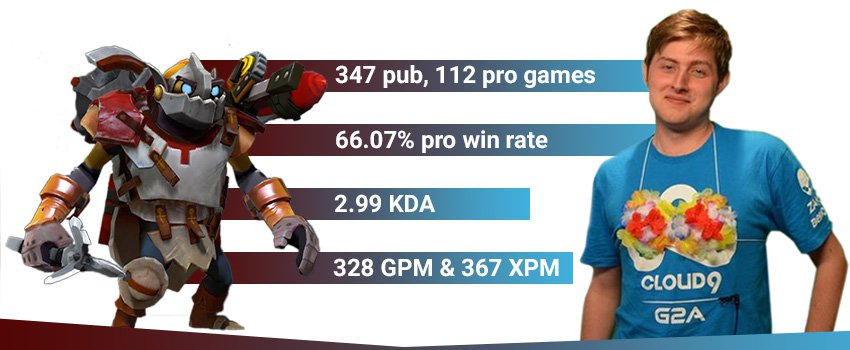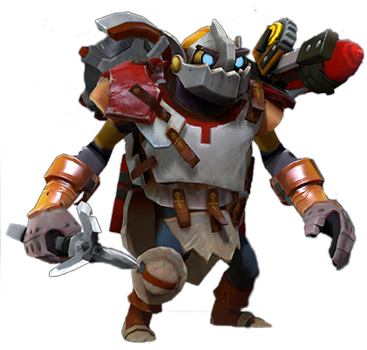Clock is a versatile laner but because of his resource independence is always played as a pos. 3 or pos. 4. He is one of the very few heroes that can easily manipulate the creep equilibrium by blocking his own creeps with Cogs, which makes him an ideal hero for the offlane (either as a farmer or as a support). Moreover, his kill potential on low levels makes him a good roamer, especially if you are playing against slow and squishy heroes.
MAJOR
Survivable:
Many skills in Clock’s arsenal
could be used defensively. Power Cogs can push back enemies that want to
initiate on you and form a physical
barrier between you and your opponents. Hookshot could be used as an escape
mechanism on any units (allies included) who are far away from the fight. Rocket
Flare can be used to scout out gank attempts. Last but not least, he is a STR hero. This makes him a very hero to kill,
which is a valuable tool considering his aggressive playstyle.
Initiator:
Hookshot is one of the best
(if not the best) initiation spells in the game. It has a ridiculous range, and
it stuns targets in a small AoE radius on impact.
The long range is perfect for ganking targets that would be out of reach for
most heroes. This is, for example, quite strong versus split-pushers because it
allows Clock to easily get in position to punish them.
Control:
Rattletrap has a variety of
tools to control enemies - very valuable as a follow-up on his Hookshot
initiation. First of all, his Hookshot stun goes through magic immunity, which
is always useful. Secondly, he can use Power Cogs to trap units with himself or push them around the battlefield. It’s
worth noting that he can use Cogs to control lane creeps as well, manipulating
the creep equilibrium. Finally, the very frequent ministuns Battery Assault gives are very powerful for controlling
an isolated target.
Solo Kill Potential:
His initiation and control
coupled with the good sustained damage of Battery Assault and the nuke of
Rocket Flare make Clock a very powerful ganker
that can easily get solo kills, especially in the early stages of the game.
MINOR
Movement Speed:
Clock has above average
movement speed. Coupled with Battery Assault, this makes him very deadly because
he is able to catch up to and stick to his targets, dealing Assault damage.
Vision:
Rocket Flare is a global spell
which gives vision in an AoE around its projectile, and for a few more seconds,
on the place of impact. This is a very valuable tool not only for the team but also for Clock himself as it helps him
find targets for ganks.












